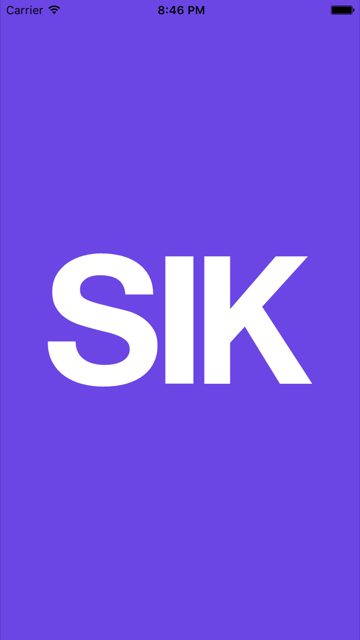

- #Ionic svg splash screen full
- #Ionic svg splash screen code
- #Ionic svg splash screen series
- #Ionic svg splash screen free
#Ionic svg splash screen full
The fadeInAndSpin animation will transition the element to full opacity, and it will also transition the rotation back to 0 degrees (i.e. cls-1 Īt the bottom of this file, we have created 2 keyframe animations.
#Ionic svg splash screen code
Here's the resulting code for this particular SVG. svg and some options will pop up that will allow us to save it, and to view the code for it directly: In order to export an SVG from Illustrator, we can just select the shapes that we are interesting in exporting and then go to: File > Export Selection However, you should keep in mind that the more complex the vector you create is, the larger and more complex the resulting SVG will be.

The SVG itself isn't all that relevant to the tutorial, we just need something to work with. I just wanted to create some simple design that might look cool with an animation, so I've just created this strange logo with no particular meaning: I will be using Illustrator for this tutorial.
#Ionic svg splash screen free
It is a paid program, however, and there are free alternatives available.

Adobe Illustrator is a great way to do this, it's the program that is typically used by designers to create vector graphics and it has built-in support for SVG. Create the SVGĪs you've seen above, you can just write out the XML for an SVG yourself, but if you're building anything more than simple shapes you will probably want to use some kind of program to generate the SVG for you. We will just be adding the SVG animation to the Home Page which is automatically generated, so there is no more set up required. Once that has finished generating, you should make it your working directory: cd ionic-svg-animation We're going to start by generating a new blank Ionic application, to do that just run the following command: ionic start ionic - svg - animation blank If you want a much more detailed guide for learning Ionic, then take a look at Building Mobile Apps with Ionic.
#Ionic svg splash screen series
If you're not familiar with Ionic already, I'd recommend reading my Ionic Beginners Guide or watching my beginners series first to get up and running and understand the basic concepts. You must also already have Ionic set up on your machine. Before We Get Startedīefore you go through this tutorial, you should have at least a basic understanding of Ionic concepts. So, you can quite easily write an SVG yourself, but if you want to start creating more complex shapes it may be helpful to design them in a program like Adobe Illustrator (as we will be doing in this tutorial). This simple example just implements a circle, but you can also define other shapes within an SVG and even complex paths. The fact that the SVG above is 100×100 is irrelevant to the size that we may actually want to display it as. Since we are defining this circle this way, we could easily scale that up to have a radius of 20,000px without losing any quality. This defines a yellow circle with a green border. Here's a very simple example of what an SVG may look like: This means they can be embedded right into a web page, and we can even interact with the components of an SVG like we would any normal DOM element. The defining characteristic of SVGs is that they are defined using an XML format and are supported by browsers. The vector format is not something specific to SVGs. If you scale up a vector graphic there is no loss in quality, because no matter what size the image is, we have the data to define what it should look like. If you wanted to scale up a raster image, as you will likely have done at some point in the past, it will lose quality and become blurry as it expands – as the image expands beyond a number of pixels it had originally, the blank pixels need to be filled in but there isn't any data that defines what the image should look like at that size. Unlike standard raster based images which are composed of pixels, vector graphics are defined mathematically. SVG stands for Scalable Vector Graphic, and that is a pretty good description of what it is. Here's what we will be building: A Quick Introduction to SVGĪs I mentioned, if you want an in-depth introduction to SVGs I would recommend checking out Sarah's content, I will, however, give you a quick introduction. If you want a good introduction to SVGs you should go read her book, but in this tutorial, I'll just be running through a basic example of how you might use an animated SVG in your Ionic applications.


 0 kommentar(er)
0 kommentar(er)
